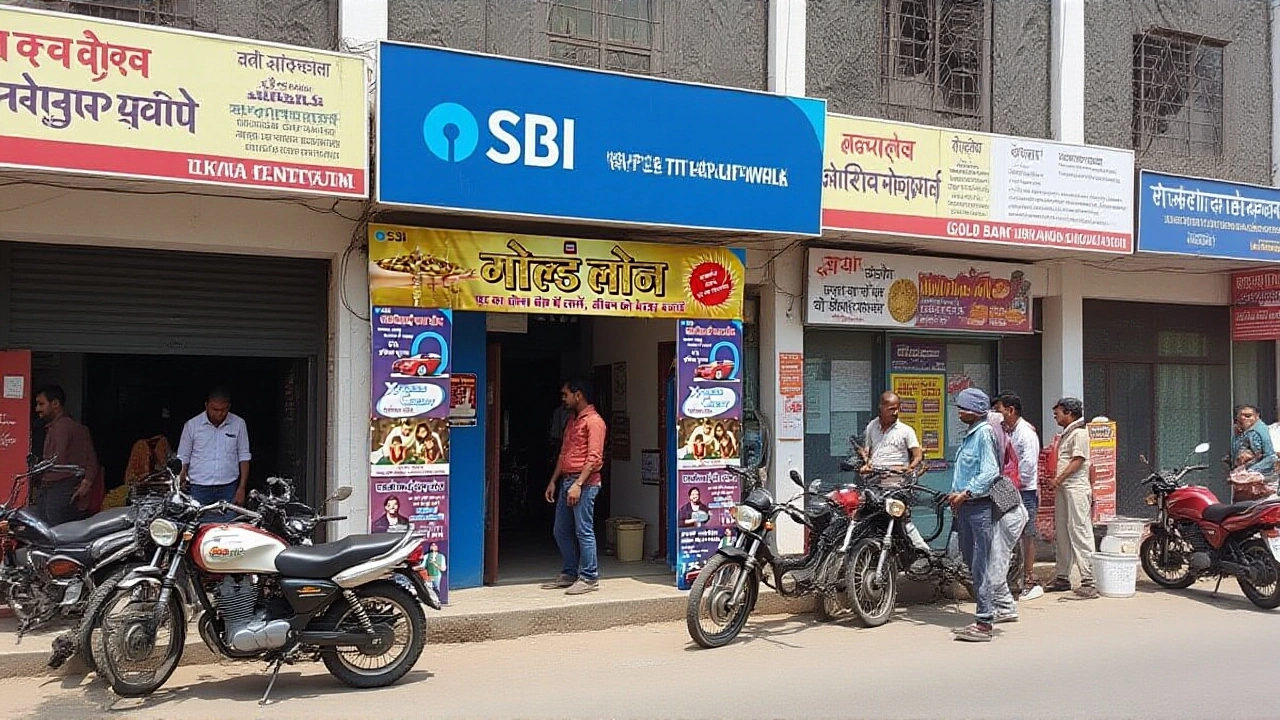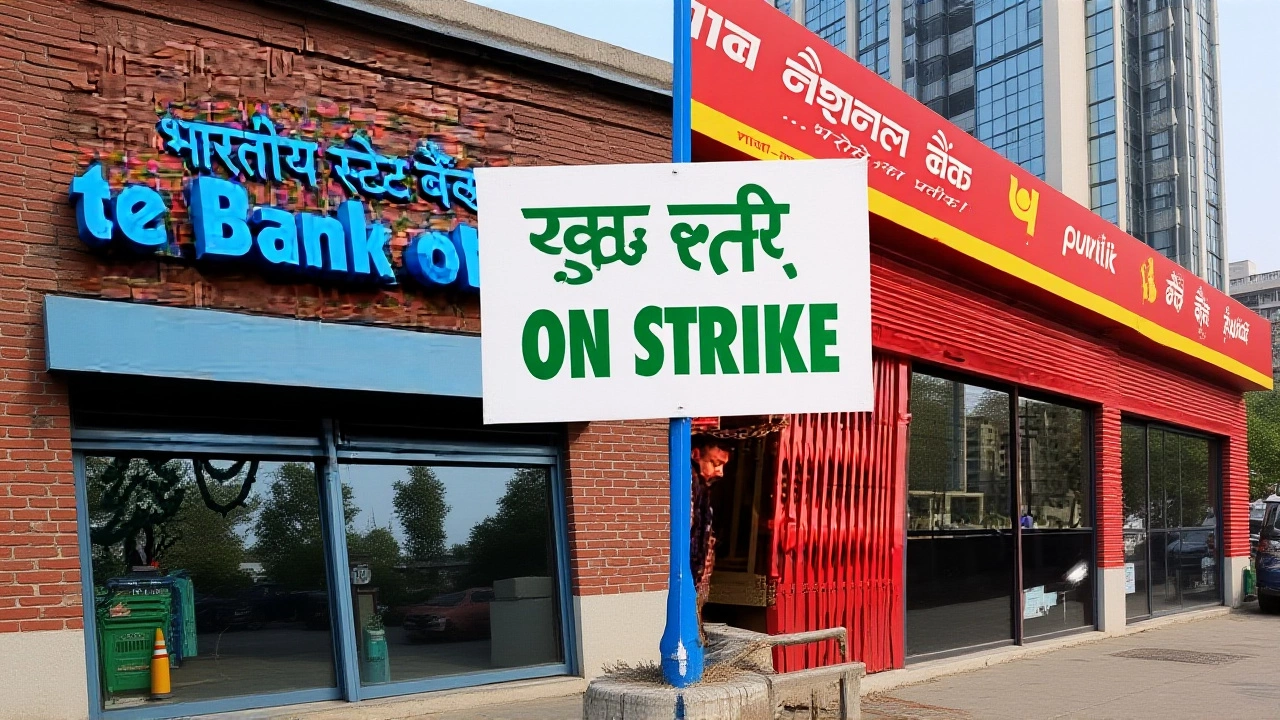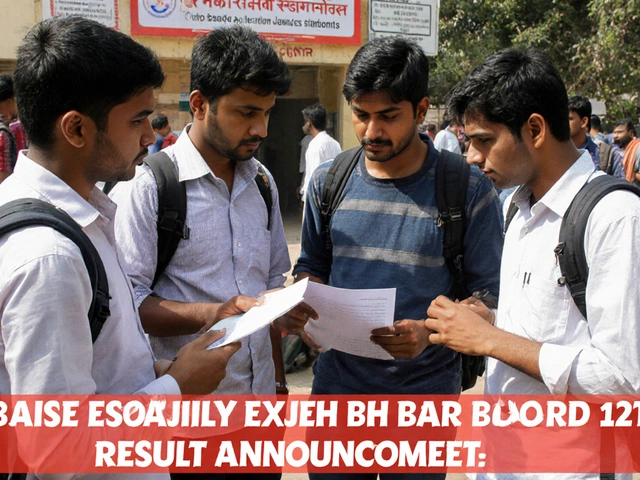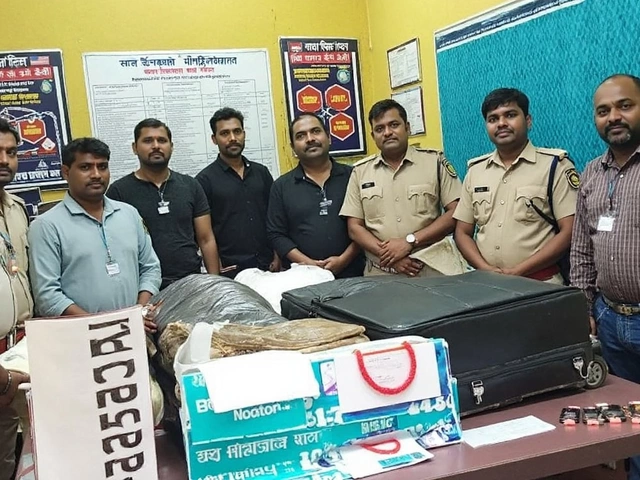When United Forum of Bank Unions (UFBU) warned of a nationwide bank strike from to , the banking world braced for chaos, especially in Jharkhand. The strike would have shut every one of the state’s 3,319 branches, putting roughly ₹20,000 crore of daily transactions at risk. The move was led by Prakash Urav, State General Secretary of All India Bank Officers Confederation (AIBOC), and reinforced by Raj Kumar Singh, UFBU’s Jharkhand coordinator.
Background: Why a Strike Was on the Table
The banking sector in India has been expanding rapidly. In the last year, the number of branches grew by about 7 %, yet staffing levels lagged behind. UFBU, which aggregates nine major bank unions representing more than 800,000 employees across public, private, cooperative, foreign and regional rural banks, argued that the recruitment drive has not kept pace with this growth.
At a press conference in the State Bank of India’s administrative building on Tuesday, UFBU reiterated its demand for a five‑day work week – a shift from the traditional six‑day schedule. The union also pressed for accelerated recruitment across all cadres, citing chronic vacancies that force existing staff to shoulder an ever‑increasing workload.
Timeline: From Announcement to Cancellation
- 22 Mar 2025 – A public holiday (Saturday) already on the calendar; no bank work scheduled.
- 23 Mar 2025 – Sunday public holiday; UFBU’s strike would have officially begun at midnight.
- 24‑25 Mar 2025 – Planned strike days, targeting all 12 public‑sector banks, regional rural banks and cooperative banks operating in Jharkhand.
- 27 Mar 2025 – A conciliatory meeting in Mumbai with the Central Labour Commissioner, the Ministry of Finance and the Indian Banking Association (IBA) produced a tentative understanding.
- 28 Mar 2025 – UFBU announced the suspension of the strike, pending a follow‑up meeting in the third week of April under the oversight of the Chief Labour Commissioner in Delhi.
During the Mumbai talks, the government pledged to examine the five‑day work‑week request and to expedite recruitment for the 800,000‑strong banking workforce. The IBA echoed this sentiment, promising a detailed policy note within the next two weeks.
Union Demands: What the Bank Employees Want
The core demands can be boiled down to two points:
- Five‑day work week – A move intended to align banking hours with global standards and to give employees a regular weekend.
- Accelerated hiring – The unions want the Reserve Bank of India (RBI) and individual banks to fill vacancies at a rate of at least 10 % per quarter, rather than the current 2‑3 %.
UFBU also voiced opposition to the continued privatization of public‑sector banks, fearing that the drive could erode job security for millions of workers.

Government and Industry Response
After the initial shock, the Ministry of Finance convened an emergency meeting with the Central Labour Commissioner (CLC) and senior officials from the RBI. While the ministry stopped short of an outright concession on the five‑day week, it did commit to a “comprehensive review” of staffing norms and to present a draft amendment to the banking service rules by the end of April.
The RBI, in a statement, emphasized the importance of maintaining financial stability and warned that any prolonged disruption could jeopardize the flow of credit, especially in rural areas where banks are the primary conduit for government schemes.
Meanwhile, the IBA, representing both private and public banks, expressed willingness to engage in constructive dialogue. Its president, Amresh Vikramaditya, Secretary of All India Bank Officers Confederation (AIBOC), said the association would draft a joint proposal that balances employee welfare with operational continuity.
Impact on Jharkhand’s Banking Landscape
Had the strike gone ahead, the fallout would have been tangible. The state’s 3,319 branches handle an average of ₹6,000 crore in daily transactions, ranging from payroll disbursements for government employees to credit for small‑scale farmers. A four‑day shutdown could have delayed salary credits for over 1.2 million public‑sector employees and stalled loan disbursements worth an estimated ₹1,200 crore.
Small businesses in Ranchi and other urban centres reported that they were already preparing contingency cash reserves, fearing that the strike would cripple point‑of‑sale transactions. Rural cooperative banks, which serve as the lifeline for agricultural credit, voiced particular anxiety about missing the sowing season deadlines.
Fortunately, the last‑minute cancellation meant that banks reopened on as usual. However, the episode has left a lingering unease among customers who now question the resilience of the banking system during labor disputes.

Looking Ahead: What’s Next for the Banking Unions?
The next round of talks is slated for the third week of April, with the Chief Labour Commissioner supervising the process from Delhi. Both sides have agreed to submit written proposals two days before the meeting, ensuring a more data‑driven discussion.
Analysts predict that even if the five‑day work week is not immediately granted, the dialogue could pave the way for phased implementation – perhaps starting with a pilot in a few major metropolitan branches before a nationwide rollout.
For now, the banking sector in Jharkhand breathes a sigh of relief, but the underlying issues of staffing shortfalls and work‑life balance remain unresolved. The upcoming negotiations will be the real litmus test for whether the unions can convert a moment of crisis into lasting reform.
Frequently Asked Questions
Why did the banks originally schedule a four‑day shutdown?
The United Forum of Bank Unions (UFBU) announced the shutdown to pressure the government and banking associations into adopting a five‑day work week and accelerating recruitment, after months of stalled negotiations.
How many bank branches would have been affected in Jharkhand?
All 3,319 branches across public, private, cooperative and regional rural banks were slated to close, potentially halting transactions worth around ₹20,000 crore during the four‑day period.
What are the main demands of the bank unions?
The unions seek a shift to a five‑day work week and a significant boost in hiring to fill vacancies, aiming for at least a 10 % quarterly increase in new appointments.
What role did the Central Labour Commissioner play?
The CLC facilitated the Mumbai meeting where the government, UFBU, and the Indian Banking Association discussed a temporary pause to the strike and agreed to a follow‑up meeting in April under the CLC’s oversight.
When is the next negotiation expected to happen?
Both parties have scheduled a follow‑up session for the third week of April 2025, with the Chief Labour Commissioner from Delhi presiding over the talks.



